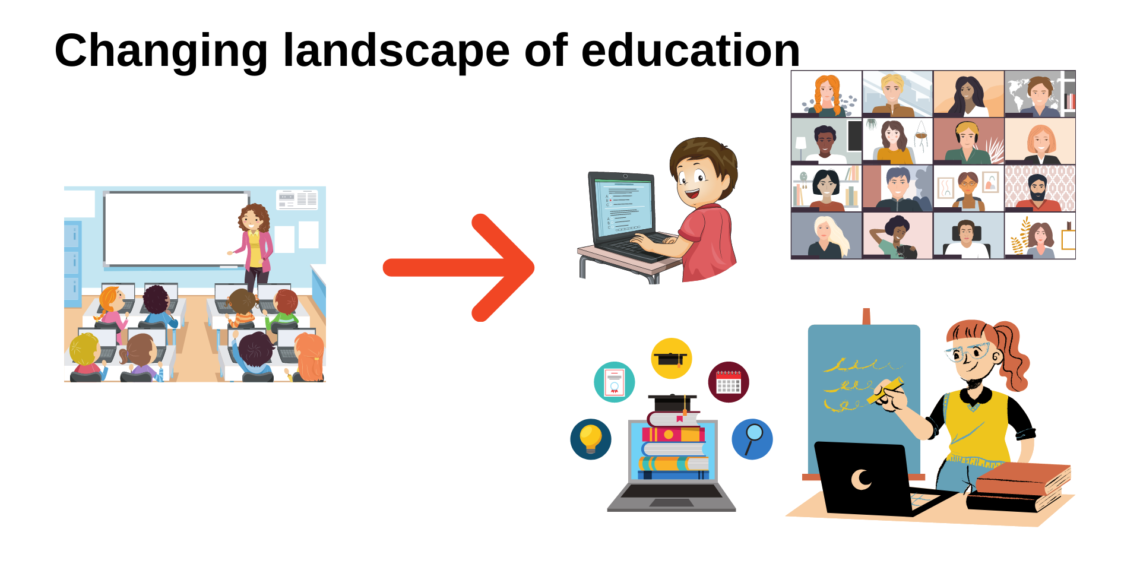Changing Landscape of Education

We have seen in the past one year that instructors/teachers, some with no previous experience of teaching online or at a distance, discovered new approaches to teaching and learning and imaginative work was undertaken to overcome the very real challenges this current reality gives rise to
Have been observing thousands of online courses and programs are offered across India now. Each passing day number has been steadily growing. Now online programs and courses are seen as strategic investments by schools, colleges and universities eager to increase access and flexible learning routes for their programs and students. Parents having access to resources are fast in adapting it. Recently many parents were invited for having demo of Online School based of US.
Major Changes in the Way We Teach Post C19
• Several key developments in online learning and how they impact our understanding of pedagogy;
• A move to opening up learning, making it more accessible and flexible. The
classroom with information delivered through a lecture is no longer the unique centre of learning.
• An increased use of technology, not only to deliver teaching, but also to support and assist students and to provide new forms of student assessment.
Blended Learning
Today student learn in a variety of delivery modes – face-to-face, in a blended format and fully online to facilitate the development of flexible skills. Future is going to be blended learning herein reach of premium quality education institute will be reach far off places which wasn’t possible earlier in physical mode.
Use Of Open Source Educational Resources
Wide available open source of content will be used by students to learn. Quality of learning content will improve it’s accessibility to wider students across the globe. Digital media, YouTube videos such as TED talks or the Khan Academy and, increasingly, open educational resources in the form of short lectures, animations, simulations, virtual labs, virtual worlds and many other formats enable instructors and students to access and apply knowledge in a wide variety of ways. There are now many thousands of examples of stand-alone, open educational resources that can be downloaded free for educational use. CBSE has built content library making it available for all students free of cost. Similarly there are various resources available for improving knowledge on particular topic or subject.
Anytime, Anywhere, Any One Can Learn
Advances in digital technologies, social media, and mobile devices such as smartphones and tablets, give the end user, the student, much more control over access to and the creation and sharing of knowledge. This empowers students, and faculty and instructors are finding ways to leverage this enhanced student control to increase their motivation and engagement. Content is available digitally, students can opt choose to students as per their suitable timing. Students in India can take classes from US or other geography in different time zone as per their convenience. Interactive learning mode making it more pleasant experience similar to offline
class room from comfort of students home.
Assessment
Changing learning pattern demand change in Form of Assessment but seems we are not not ready or not fully prepared for bring change in Assessment pattern. There are Digital tools can be used for online exams and for hand-written tests as well. New challenges also arise concerning what type of learning to assess, student support in using technology for sophisticated demonstrations of learning, and issues of security for exams. Not all students are as fluent and secure in their use of technology for learning and assessment as their continuous texting may indicate.

Good